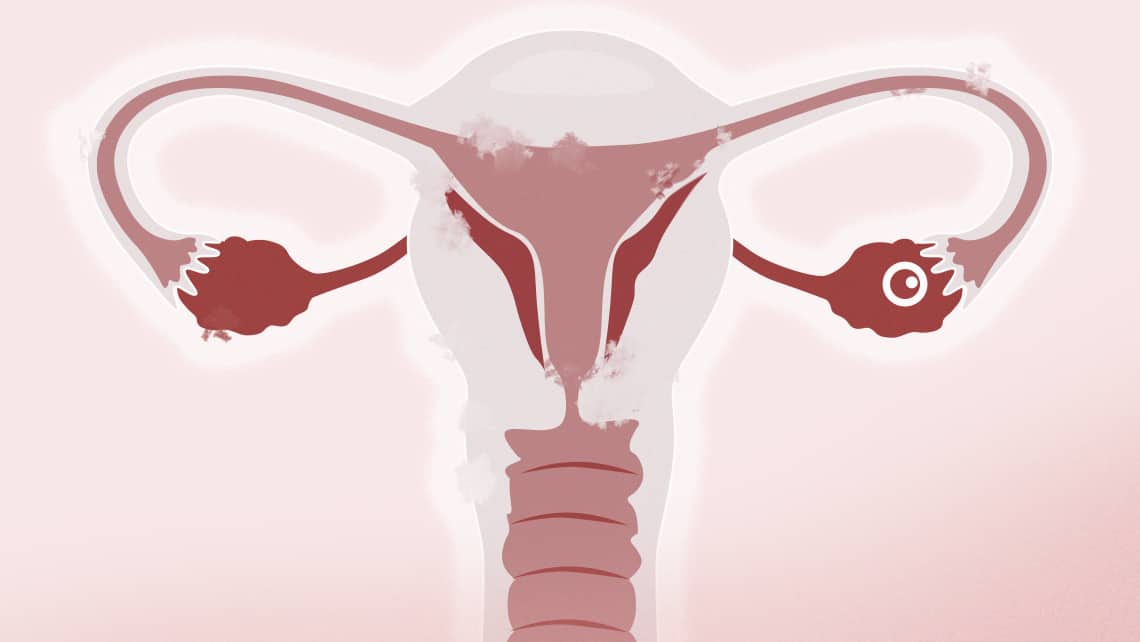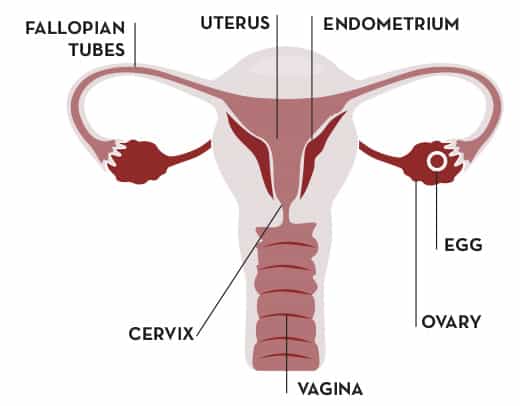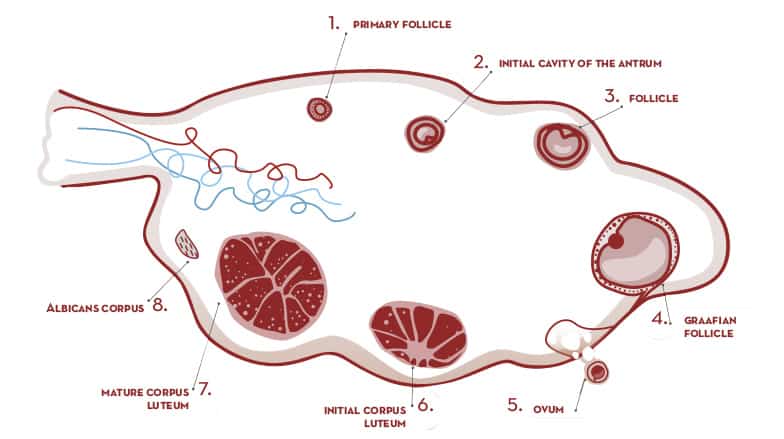
Regular VS irregular ovulation
A woman’s cycle can be regular – lasting between 21 and 25 days – or irregular. Here we explain why.
From birth, the ovary harbours all the oocytes (eggs) a woman will ovulate, 400 to 500 times, more or less periodically, over the course of 35 to 40 years.

This is achieved by very complex mechanisms aimed at perpetuating the species.
In each menstrual cycle, a follicle (the functional unit that contains the egg) is selected, grows to a size of 18-20 mm, breaks its wall and releases the egg that has been maturing inside it, which is picked up by the fallopian tube. If the egg is fertilised by a sperm during its journey through the fallopian tube, an embryo will form, which a few days later will reach the uterus and will have the chance (20-25% in the human species per cycle) to implant in the endometrium and initiate gestation.
If the egg is not fertilised during this process, the woman will have her period about 14 days after ovulation.

Regular cycle
Most women menstruate every 21 to 35 days, which is a normal interval time. Only a percentage of women have periods of 28 days (considered standard). The normal length of a period ranges from 2 to 8 days. It is common and normal for cycles to be irregular both in the first years after menarche (date of the first menstruation) and in the last years until ovulation and therefore menstruation cease (menopause).
The endometrium (uterus internal mucous membrane that prepares each cycle to receive possible embryos), when the woman doesn’t become pregnant, is shed and evacuated through the vagina to the outside in the form of bleeding (menstruation).
The fixed phase of the menstrual cycle, in terms of time, occurs from ovulation to menstruation and corresponds to approximately 14 days. Thus, if a woman has a 28-day menstrual cycle, ovulation will occur on day 14 of the cycle (the first day of the cycle is the day active menstrual bleeding begins). If her cycle is long, ovulation will occur after the 14th day of the cycle (e.g. in a 40-day cycle ovulation will occur on the 26th day of the cycle). In women with short cycles ovulation will occur before the 14th day of the cycle.
Irregular cycle
There’s also a percentage of women with anarchic cycles that can range from having one menstruation every “x” months, to having 2 per month. They may even disappear without this meaning that the woman has entered menopause. The variability is wide in women and within the same woman, and can change throughout life.
What problems can the alteration in the ovarian cycle rhythm cause?
Basically, there are two most frequent reasons for consultation related to this situation:
- Irregularity bothers the woman because she doesn’t know when she’s going to have her period.
- If she’s seeking pregnancy, the irregularity means that she doesn’t know which are her most fertile days (approximately 3 days before and 3 days after ovulation) because she doesn’t know when ovulation occurs.
We recommend to consult your gynaecologist, who will carry out a complete gynaecological check-up including, where appropriate, analysis of hormones directly related to the ovarian cycle and others, such as thyroid hormone and prolactin, which may be the origin of these alterations and whose restoration to normal is simple with the corresponding treatment.
In practically all cases, it is possible to restore the normal rhythm of the ovarian cycle using the wide range of drugs available on the market.
On the other hand, it should not be forgotten that other frequent causes of menstrual irregularity are alterations in body weight (both overweight and obesity as well as extreme thinness) secondary to eating disorders (anorexia and bulimia), extreme physical exercise, stress, taking drugs indicated for tumour or psychiatric illnesses… not forgetting that the most frequent cause of the “disappearance” of menstruation in young women is pregnancy.
Dr Lydia Luque, gynaecologist at Instituto Bernabeu.
